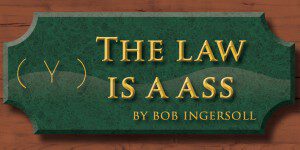“When television is good, nothing – not the theater, not the magazines or newspapers – nothing is better. But when television is bad, nothing is worse. I invite each of you to sit down in front of your own television set when your station goes on the air and stay there, for a day, without a book, without a magazine, without a newspaper, without a profit and loss sheet or a rating book to distract you. Keep your eyes glued to that set until the station signs off. I can assure you that what you will observe is a vast wasteland. You will see a procession of game shows, formula comedies about totally unbelievable families, blood and thunder, mayhem, violence, sadism, murder, western bad men, western good men, private eyes, gangsters, more violence, and cartoons. And endlessly commercials – many screaming, cajoling, and offending. And most of all, boredom. True, you’ll see a few things you will enjoy. But they will be very, very few. And if you think I exaggerate, I only ask you to try it.” – Newton N. Minow, Chairman, Federal Communications Commission, Speech at the National Broadcasters Association Convention, May 9, 1961
This week both Entertainment Weekly and TV Guide published their fall TV preview issues. Among the many new shows vying for an audience and a pick-up for next season are The Flash, a spin-off of the CW’s Arrow, and Gotham, a “crime serial” (as described by EW) which takes place in DC’s mythic city a decade or more before Bruce Wayne first dons the cowl of the Batman. Constantine, based on Vertigo’s occult anti-hero, aims to make us all forget Keanu Reeve’s frankly horrid movie – um, we don’t need any help in erasing that mistake from our memory – and, at least from what I’ve seen in trailers on the web – will not miss its mark. Returning genre-oriented shows (meaning including elements of fantasy and science fiction as well as directly linked to comic books) are the afore-mentioned Arrow, Grimm, Under The Dome, Marvel’s Agents Of S.H.I.E.L.D., Vampire Diaries, Once Upon A Time, American Horror Story, Supernatural, The Originals, The Walking Dead, Resurrection, and Sleepy Hollow.
Whew! Did I miss any?
It seems to be a golden age for genre television, which I think is partly due to The Big Bang Theory, the success of which has helped out the millions of geeks in this country and around the world; it’s now cool to be a geek, and while the networks, including cable, may have been a little slow in noticing, they’ve got their eyes wide-open now.
…but there’s been plenty of science fiction, fantasy, and comic-based shows for as long as I can remember. In fact, I sometimes think that if it weren’t for television, my imagination might have been dimmed, that I might have not picked up that copy of Stranger In A Strange Land in the bookstore, that I wouldn’t have taken “Introduction to Science Fiction” as my English requirement in my first year of college, that I wouldn’t have been led to discover the magic words…
“What if?”
I was born in 1953, which means that I was lucky enough to catch the tail end of the television’s Golden Age. In the late 50s and early 60s, the medium was still experimenting with this new entertainment and took a lot of chances. Which meant that, though I was frequently scared out of my mind, I watched The Twilight Zone and The Outer Limits.
A few years later, thanks to the old Channel 9 in New York City and the national Million Dollar Movie franchise, I watched Godzilla trampling Tokyo and The Giant Behemoth not only trampling, but also irradiating London, while Rodan flew at supersonic speeds overhead. And years later in Psych 101 I totally got the Freudian concept of the id because of Forbidden Planet.
Yes, it was all there on the tube: Invaders From Mars. Earth Vs. The Flying Saucers. Them! Queen Of Outer Space. The Day The Earth Stood Still. The Fly. War Of The Worlds. The Blob. Mysterious Island. World Without End. The Time Machine. King Kong. When Worlds Collide. The Thing From Another World.
Though fifty years ago these were throwaway movies – probably bought for very little dollars and broadcast to fill what otherwise would be dead airtime, many are now lauded masterpieces – King Kong and The Day The Earth Stood Still, for example – while others still get their due as classics of the B-move genre: Forbidden Planet, The Fly, The Blob, Invaders From Mars, for example.
Well, okay maybe not so much Queen Of Outer Space or World Without End, though they are still two of my favorite “B-movies” of the genre, so much so that my cousin Ken Landgraff, a noted comics artist who worked with Wally Wood and Neal Adams in their studios before striking out on his own to help pioneer the independent comics movement in the 70s and 80s, made copies of them for me, which I cherish.
Yes, there were many if not classic, fondly remembered genre shows back in the day: My Favorite Martian, which starred Bill Bixby – my first “screen idol” crush – and Ray Walston. Bewitched with the gorgeous Elizabeth Montgomery (go, Team Dick York!). I Dream Of Jeannie, on which network censors forbade Barbara Eden to show her belly button and whose male star played an inept, befuddled astronaut – and didn’t he turn that around a few years later on a show about a Texas oil family. There were the first, black-and-white episodes of Lost In Space and the colorful Wonder Woman, which I think is not so much remembered for the show itself but for Lynda Carter, the Amazonian beauty who seemed to step right out of the pages of the eponymous comic. Bill Bixby returned to genre TV with his, yes, incredible performance as the lonely and cursed genetic scientist Bruce Banner in The Incredible Hulk. There was The Six Million Dollar Man and its spin-off, The Bionic Woman.
And then there was Star Trek. Which begat Star Trek: The Next Generation and Star Trek: Deep Space Nine and Star Trek: Voyager. (“Uncle Martin” Ray Walston became a favorite recurring guest star on Next Gen and Voyager as Boothby, the Star Fleet Academy gardener – by the way, the character is first mentioned in the fourth season episode “Final Mission,” in which Wesley Crusher leaves the Enterprise to attend Star Fleet Academy; Captain Picard tells him to look up “Boothby, one of the wisest men I have ever known.”
There were also shows like Farscape and the rebooted Battlestar: Galactica. There were Buffy The Vampire Slayer and Angel and Charmed. There was Stargate SG-1 and its descendents, Stargate Command and Stargate: Atlantis. Shows that never built a huge audience by network standards, but like Star Trek and its sequels, had devoted fans that built franchises that couldn’t be contained on television alone but led to self-contained universes that spawned conventions and books and websites.
And there were shows that tried but weren’t as successful: Shows like The Man From Atlantis and Sliders and Time Tunnel and Space: 1999. Some completely sucked. Some started out strong and got sidetracked. Some just never built the audience needed to stay on the air.
And there was Smallville. Which led to Arrow. Which is now leading to The Flash.
I’m wondering how long this bonanza of science-fiction, fantasy and “adapted from the four-color page!” on the small screen will go on. Will it flourish for a short time and then die in its season, only to be reborn ten or twenty or even thirty years from now? Will someday another columnist write a piece about how, when he or she was growing up, back then in the early 2000s, there was a cornucopia of television shows about super-heroes and monsters and fairies and princes and princesses and aliens and vampires, and how, because of television, he or she learned how to embrace those magic words…
“What if?”





















